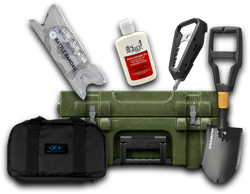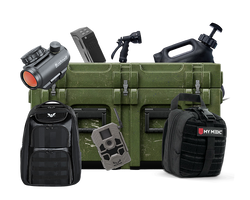
Close Quarters Combat (CQC) Techniques: Mastering Hand-to-Hand Combat
Close Quarters Combat (CQC), also known as close combat, is a type of fighting in which small units engage the enemy with personal weapons at a very short range, potentially to the point of hand-to-hand combat or fighting with handheld weapons. It can occur among military units, police and criminals, and other similar scenarios. Mastering CQC techniques requires a blend of physical prowess, quick thinking, and a deep understanding of combat principles. This article will delve into the world of CQC, offering insights into effective techniques and strategies for mastering hand-to-hand combat.
Understanding Close Quarters Combat (CQC)
CQC is a tactical concept that involves physical confrontation between several combatants at very short ranges. It can take place in various environments such as urban areas, jungles, trenches, and other types of terrain. The nature of CQC requires quick reflexes, situational awareness, and the ability to make split-second decisions. It's a high-stakes form of combat that leaves little room for error.
In an urban environment, for instance, CQC can involve room clearing, where a team of operators must quickly and efficiently clear a building of threats. This requires a high level of coordination, communication, and skill. In a jungle or forest environment, CQC might involve ambush tactics, where a small unit uses the element of surprise to neutralize a larger or more powerful enemy.
The Principles of CQC
There are several key principles that underpin effective CQC. These include:
Speed:
In CQC, speed is of the essence. This doesn't just refer to physical speed, but also the speed of decision-making. The faster you can assess a situation and respond, the better your chances of success. This requires a high level of physical fitness, as well as training in decision-making under pressure.
Aggression:
Aggression in CQC doesn't mean recklessness. Instead, it refers to the assertive application of combat techniques. It's about taking the initiative and maintaining control of the situation. This requires a high level of confidence in your skills and abilities, as well as the mental toughness to maintain aggression even in challenging situations.
Surprise:
The element of surprise can give you a significant advantage in CQC. This could involve using unexpected techniques, or striking when an opponent is least expecting it. Training in stealth and deception techniques can help you maximize the element of surprise.
Essential CQC Techniques
There are several techniques that are particularly useful in CQC. These include:
Striking:
Striking techniques involve using different parts of your body to hit an opponent. This could involve punches, kicks, elbow strikes, and knee strikes. Training in a martial art like Muay Thai or Krav Maga can help you develop powerful and effective striking techniques.
Grappling:
Grappling techniques involve wrestling or gripping an opponent. This could involve throws, holds, or submissions. Training in a martial art like Brazilian Jiu-Jitsu or Judo can help you develop effective grappling techniques.
Weapon Disarming:
In some CQC situations, you may need to disarm an opponent. This requires specific techniques and should only be attempted when necessary and safe to do so. Training in a martial art like Krav Maga, which includes weapon disarming techniques, can be particularly useful.
Training for CQC
Training for CQC involves both physical conditioning and learning specific techniques. This could involve martial arts training, strength and conditioning workouts, and scenario-based training exercises. It's important to train under the guidance of a qualified instructor who can ensure that techniques are being performed correctly and safely.
Physical conditioning for CQC should focus on developing strength, speed, endurance, and flexibility. This could involve a combination of weight training, cardio workouts, and flexibility exercises. It's also important to include training for specific physical skills like balance, coordination, and reflexes.
Learning specific CQC techniques will typically involve training in one or more martial arts. The choice of martial art can depend on your personal preferences, as well as the specific requirements of your role. For example, a police officer might focus on learning techniques for controlling and restraining an opponent, while a military operator might focus on lethal techniques for neutralizing an enemy.
Scenario-based training exercises can help you apply your skills in a realistic context. This could involve training scenarios like room clearing, vehicle extractions, or simulated ambushes. These exercises can help you develop your decision-making skills, improve your ability to work as part of a team, and give you experience applying your skills under pressure.
The Mental Aspect of CQC
CQC isn't just about physical skills. It also requires a strong mental game. This involves staying calm under pressure, being able to make quick decisions, and having the mental resilience to keep going even when things are tough.
Staying calm under pressure is perhaps one of the most important mental skills for CQC. When the adrenaline is pumping and the stakes are high, it's easy to panic and make mistakes. Techniques like tactical breathing, visualization, and mindfulness can help you stay calm and focused, even in high-pressure situations.
Being able to make quick decisions is another crucial skill for CQC. In a close combat situation, you often don't have time to think things through carefully. You need to be able to assess the situation, make a decision, and act on it in a matter of seconds. This requires a high level of situational awareness, as well as training in decision-making under pressure.
Finally, mental resilience is key to enduring the challenges of CQC. This involves the ability to keep going, even when things are tough. It's about pushing through pain, fatigue, and fear to achieve your objective. Techniques for building mental resilience can include things like mental toughness training, resilience coaching, and even things like meditation and mindfulness.
Conclusion
Mastering CQC techniques requires a blend of physical skills, tactical understanding, and mental toughness. It's a challenging and demanding form of combat, but with the right training and mindset, it's a skill that can be developed and refined. Whether you're a military personnel, law enforcement officer, or a civilian interested in self-defense, understanding and applying CQC techniques can be a valuable part of your skill set.
Photo by Pavel Danilyuk
Share this article








